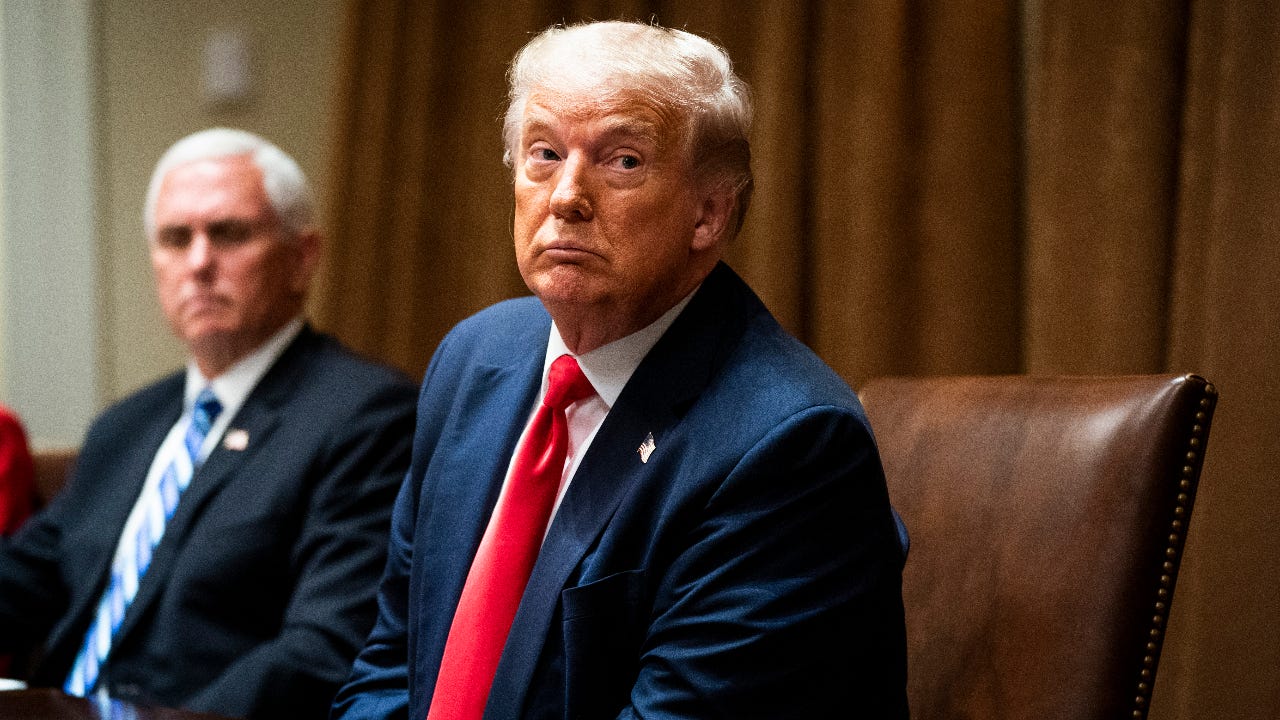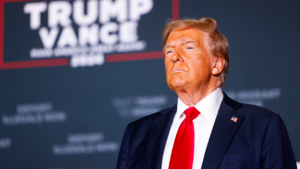Trump’s $400 weekly unemployment boost: When does it start and who would get it?

More than 30 million jobless Americans relying on unemployment benefits could eventually see a boost to their weekly check, but it might take a while.
President Donald Trump on Saturday circumvented a gridlocked Congress by signing four executive orders that provide Americans with direct economic relief amid the coronavirus crisis, one of which is a weekly $400 boost to unemployment benefits.
Yet days after the president took action, a chorus of voices among economists, unemployment experts and lawmakers alike expressed confusion and concern, not just about constitutionality, but of implementing, scaling and funding the program — valid hoops and hurdles that will likely need to be addressed before the extra funds kick in.
“Keep it simple, stupid, is always a good idea,” says Gary Burtless, a senior fellow in economic studies at the Brookings Institution who specializes in unemployment insurance (UI). “Especially in programs like unemployment insurance that have always proven, time and time again, that state administrative systems are not really up to the task of making timely benefits to everyone who is eligible.”
Here’s how Trump’s executive order would change the way unemployment benefits work and what it means for you.
Breaking down the president’s unemployment benefit memorandum
Through the CARES Act, individuals collecting unemployment were receiving an extra $600 on top of their individual state’s unemployment payout. But that provision expired on July 31.
Trump’s executive order intends to bridge that gap, though at a slightly reduced amount. Under the new order, that extra $600 check would be reduced to $400. The president’s order eclipsed what Republicans in Congress had been advocating for: a $200 weekly boost for two months, then an income-based check that would replace up to 70 percent of a person’s income — though it fell short of Democrats’ proposals to reinstate the $600 check.
How will the new UI system work?
The president’s executive order tees up a jointly funded federal-state payout — and a complicated one at that. With the new program, the federal government will pay for $300 of that weekly check, while $100 would be covered by states.
For states’ portion, they’re being directed to tap into a Coronavirus Relief Fund (CRF) established through the CARES Act, which currently has about $80 billion in funds remaining. To fund the federal portion, Trump is shifting over $44 billion worth of funds from the Federal Emergency Management Agency (FEMA) originally reserved for natural disasters such as tornadoes, wildfires and hurricanes. To that end, it has some experts wondering whether the extra aid under Trump’s executive order can be even called “unemployment insurance” at all.
“It’s a FEMA benefit,” says Michele Evermore, senior policy analyst at the National Employment Law Project who specializes in UI. “It’s totally outside the unemployment insurance system.”
How is that different from the CARES Act’s UI program?
But read between the lines and that system looks a little different compared with the CARES Act-backed lifeline Americans were used to getting.
The CARES Act reformed the UI system, creating two new separate programs: the Pandemic Emergency Unemployment Compensation (PEUC) and the Pandemic Unemployment Assistance (PUA) programs. The former was mainly used to add on an additional 13 weeks of benefits, which individuals could use in combination with their state’s individual program and its Extended Benefits (EB) system. The latter was designed to help individuals typically ineligible for benefits — think gig workers and the self-employed — get access to a check. Individuals who had exhausted their states’ original benefits and the PEUC program could also apply.
Top that off with a supplemental $600 Pandemic Unemployment Compensation payment (often called FPUC), the new system was completely federally funded.
That’s changing under the executive order’s new system, since states are now responsible for covering 25 percent of that weekly check. And experts are warning it might be overly complicated, adding administrative hurdles for states as they transition to the new system. It could mean further delays to individuals’ checks.
“They can’t just go in and turn the pump back on again,” Evermore says. “They’ll have to start up a whole new system.”
Who would be eligible for aid?
Under the CARES Act, anyone who was eligible for weekly unemployment benefits or Congress’ emergency unemployment compensation programs was receiving an extra $600 weekly check. This new system would be more scaled.
Under the order, individuals are only eligible to receive what’s being called “lost wages assistance” if they’re eligible for at least $100 per week in weekly unemployment aid. That includes all of the additional programs created under the CARES Act, as well as states’ individual programs for private-sector employees, federal workers and ex-service members.
Although every state is different, most determine your weekly benefit amount on what you were paid during a specific “base period.” And while it might not seem possible, most states’ minimum weekly unemployment payments are below $100, with Hawaii’s weekly payments coming in at a mere $5, compared with Louisiana ($10), North Carolina ($15), Nevada ($16), Delaware ($20) and West Virginia ($24), among others, according to data from the Department of Labor.
Though one estimate suggests only about 6 percent of all regular UI recipients are earning less than $100 per week in their state benefits, it would still come as a detriment to those individuals deemed ineligible, who are likely low-income earners, gig economy or self-employed individuals, as well as those who are still working, just at a reduced schedule.
“These are the people in the most economic pain right now, having to make the most difficult decisions,” Evermore says. “You’re losing the best stimulus because the lowest-income people are the ones who spend their money the fastest in the local economy.”
Under the order, how soon would benefits start?
Theoretically, Americans would be able to start receiving their extra $400 check immediately, and their $400 would supposedly be backdated. Eligible beneficiaries would be able to receive benefits “from the week of unemployment ending August 1,” the memorandum states, which would effectively cover the two weeks’ worth of checks that didn’t have the $600 of funds.
But that still doesn’t account for the time that states will need to transition over to the new system. Trump in a press conference on Monday suggested that individuals should receive these checks in two weeks, but experts are saying that’s unrealistic.
“States really struggled to get the Pandemic Unemployment Assistance program up and running, and that’s a program parallel to regular UI,” Evermore says. “They’re going to have to first figure out who’s earning more than $100, disqualify everybody else, then stand up a FEMA-funded benefit through unemployment insurance.”
How long will the program last?
The extra $400 check is supposedly going to last until FEMA’s Disaster Relief Fund (DRF) funds run out, or until Dec. 6, 2020, whichever occurs sooner. But that current pot of money is unlikely to last beyond six weeks, meaning benefits would most likely end in late September or early October, Burtless says.
How to apply for the extra $400 benefit
Another part that remains unclear: How Americans will apply for the new program.
Just as the CARES Act in many cases asked individuals to re-apply for its separate programs, some experts are expecting that Americans wanting to receive that extra check through the “lost wages assistance” program will have to apply for that separate program on top of their state aid.
Though that leads to another question: Whether the $100 benefit funded by states will be doled out through states’ regular unemployment program, or through the new system.
“It isn’t unemployment insurance; it’s like an assistance program for lost wages,” Evermore says. “Americans would have to apply for the two separately, whereas FPUC (the federal pandemic unemployment compensation) just got added to every single unemployment insurance program automatically.”
Hurdles that need to be cleared first
Trump has hinted that states might not be eligible to receive the extra $300 in federally funded unemployment aid if they can’t supply the $100 upfront, which was proving to be a challenge for states from the start.
State and local government budgets have been hard-hit due to the pandemic, amid soaring health care and unemployment costs yet declining tax revenues. Even with the option of using funds from the CRF, it means some more cash-strapped states might not be able to meet that threshold. State legislatures are also often required to approve a ramp-up in unemployment aid spending, meaning another barrier.
“Finding the resources needed to pay for a $100-per-week benefit hike may be hard and could be very time-consuming,” Burtless says.
Though the president backpedaled on those claims, saying governors could make a request that the federal government pick up the entire cost, he also suggested that the amount states are already paying out (which varies coast to coast, from $241.60 in Tennessee, to $551.60 in Massachusetts) could count toward the match.
If that’s the case, it would mean states aren’t truly supplying $100 extra in weekly benefits, therefore reducing the boost. It also means potentially excluding the near 13 million individuals on PUA and other programs, since those are federally funded and therefore might not qualify for the match, Evermore says.
“Regular state UI is only a fraction of the number of people getting unemployment insurance,” she says. “Some people will get $400 and $300 in theory.”
States transitioning over to this new system could also cause further delays, at a time when creating the much simpler CARES Act-backed unemployment programs came with drastic hurdles. Four out of the 50 states didn’t accept applications for their PUA program until June 20 or later, while West Virginia still hasn’t, according to Labor Department data. Many other unemployed individuals report still not receiving their extra $600 weekly check. Another administrative hurdle could be negotiations with the federal government and FEMA over aid.
But besides for the logistics, a big question mark is whether re-allocating natural disaster funds is unconstitutional. Speaker of the House of Representatives Nancy Pelosi referred to it as such during a Sunday appearance on Fox News.
While some could say the coronavirus pandemic is itself a natural disaster, therefore qualifying for FEMA funds, others have pointed out that the Stafford Act doesn’t allow individuals receiving UI to draw Disaster Unemployment Assistance (DUA).
And that’s not to say that Congress won’t try to come up with their own deal, potentially undercutting the president’s executive order. Some experts have speculated whether the president’s memoranda itself were more so about lighting a fire under lawmakers, rather than going around them.
“They probably believe this is going to give them better leverage in negotiations with Congress,” Evermore says. “Congress could see how unworkable this is and panic.”
What this means for Americans and the economy
All of this comes at a dire time for Americans, who are facing the worst economic downturn in a lifetime. Nearly half of U.S. households have seen their incomes shrink during the coronavirus pandemic, according to a July Bankrate survey.
Consider reaching out to any lenders and financial institutions that you regularly pay a bill to, to see if they can create some kind of forbearance program or relaxed payment schedule to help you out.
A $400 boost could strike a balance, being more economically viable than the floated $200 boost but still low enough to ease lawmakers’ worries that it’s deterring people from working, says Julia Pollak, labor economist at ZipRecruiter. She cites National Bureau of Economic Research data showing that 45 percent of UI recipients will receive more than they earned with the $400 payment, compared with 68 percent when it comes to the $600 payment.
“It really is important that people start searching, that they don’t delay the return to work, especially in cases when there are safe, socially-distant options available to them,” she says, citing that delaying work can lead to lower reemployment earnings. But if people can’t afford paying their rent or mortgage payments, “we could be in a whole different world of misery and have a Great Recession overlaced with a COVID-19 recession. That would make the recovery much harder.”






